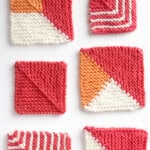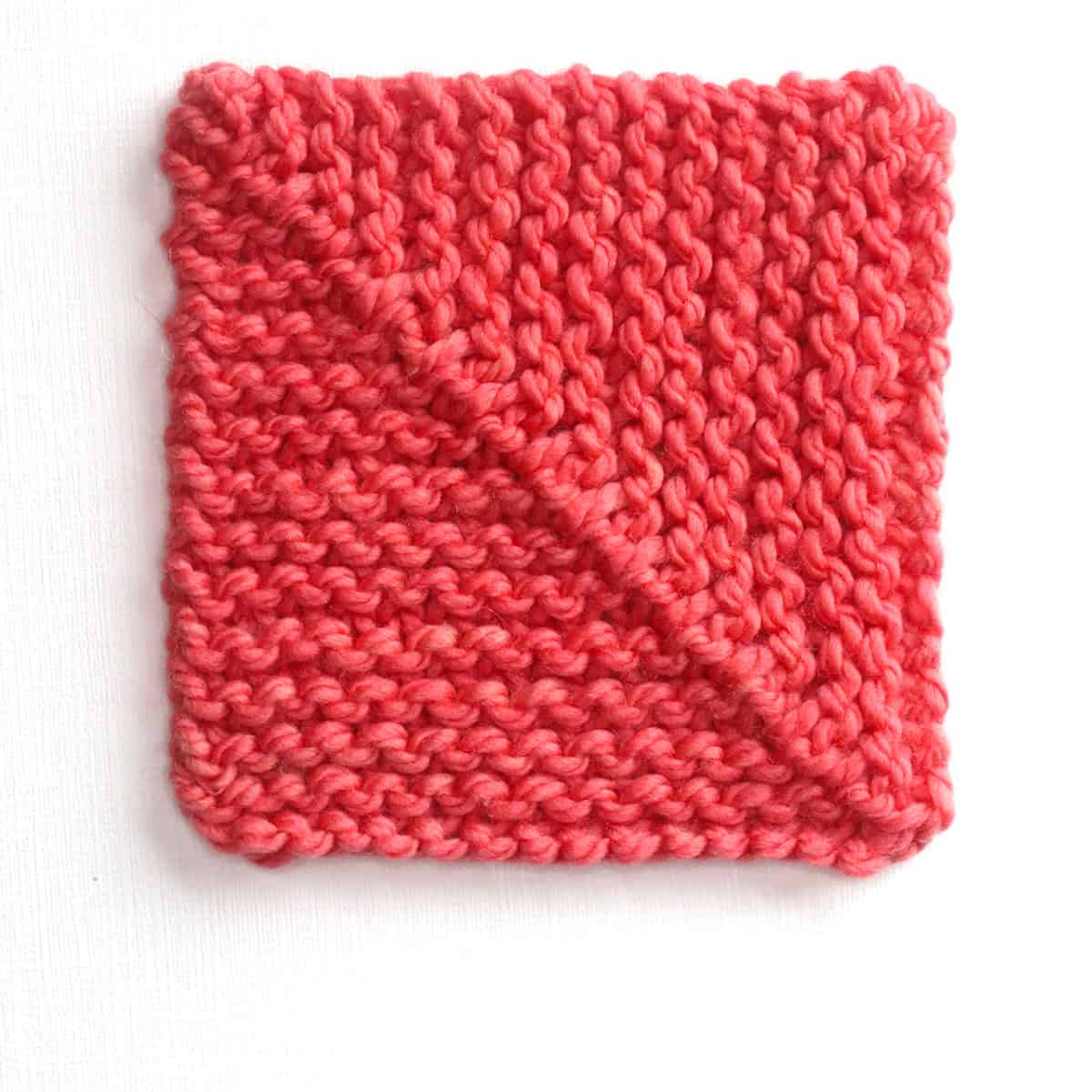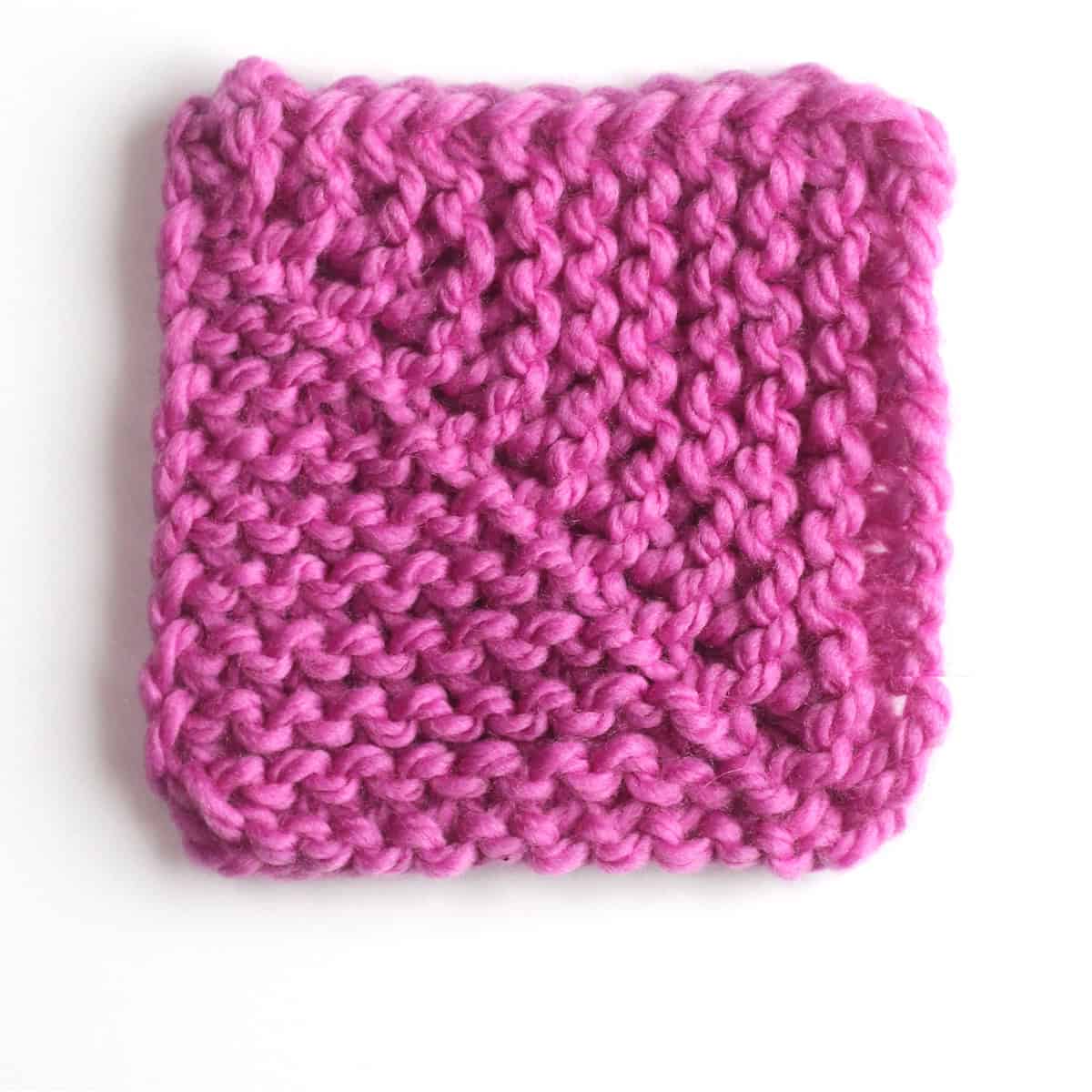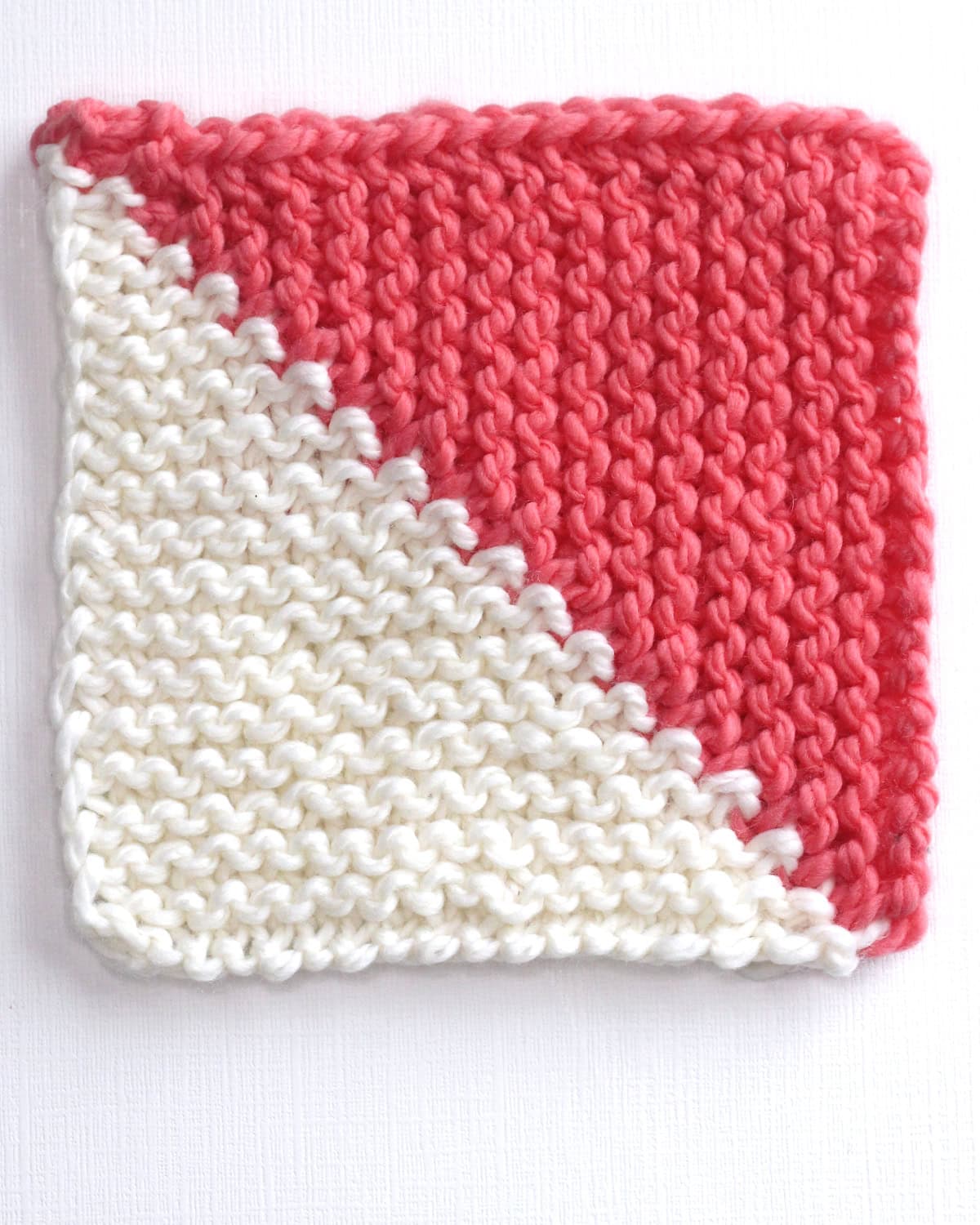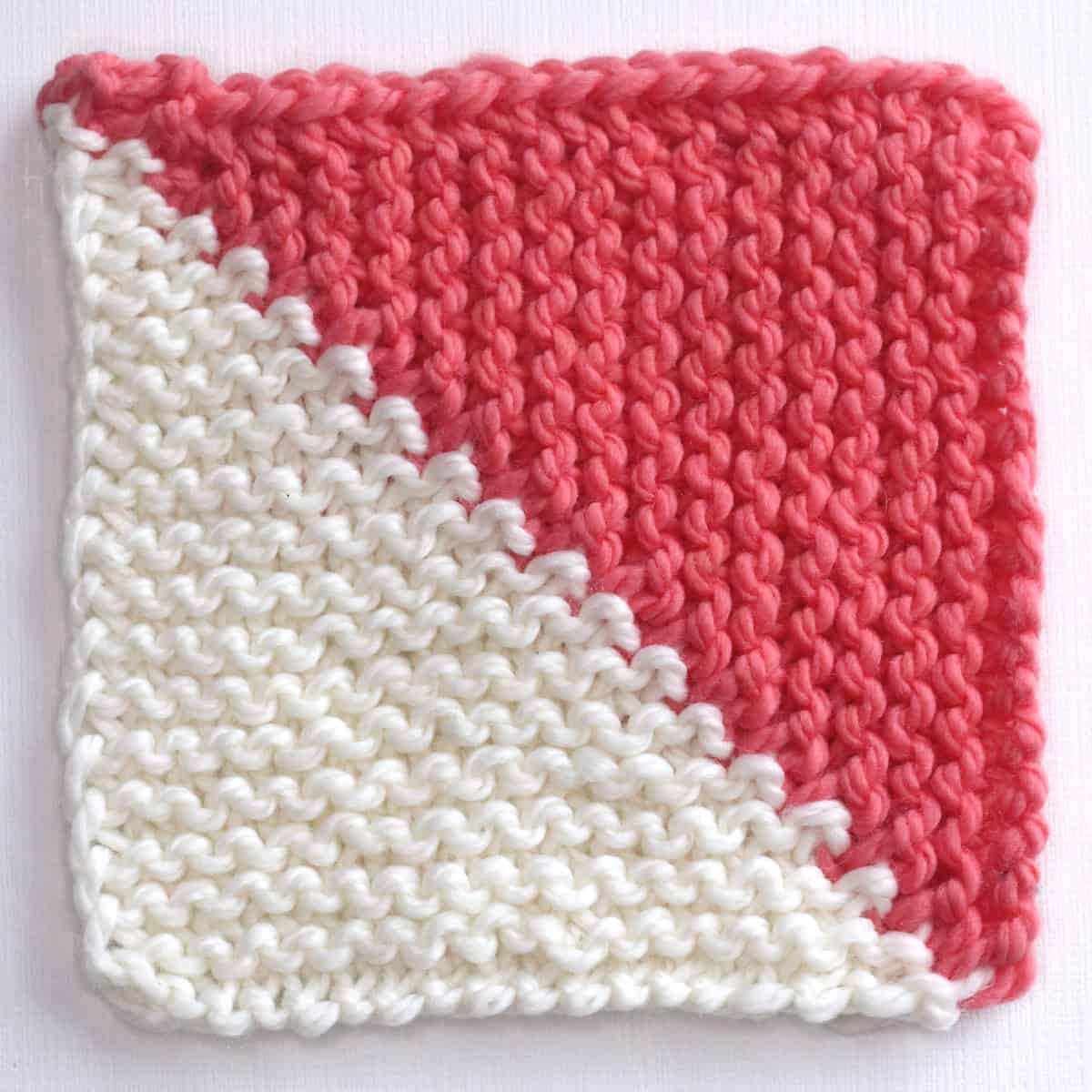Mitered Square Knitting Ultimate Guide
This Mitered Square Knitting Ultimate Guide delves into the easiest techniques, colorwork choices, and project design inspiration. These squares are knitted while working from the outside edges towards the center, decreasing stitches to create a neat, symmetrical pattern. The techniques are simple, they knit up quickly, and the design possibilities are endless.
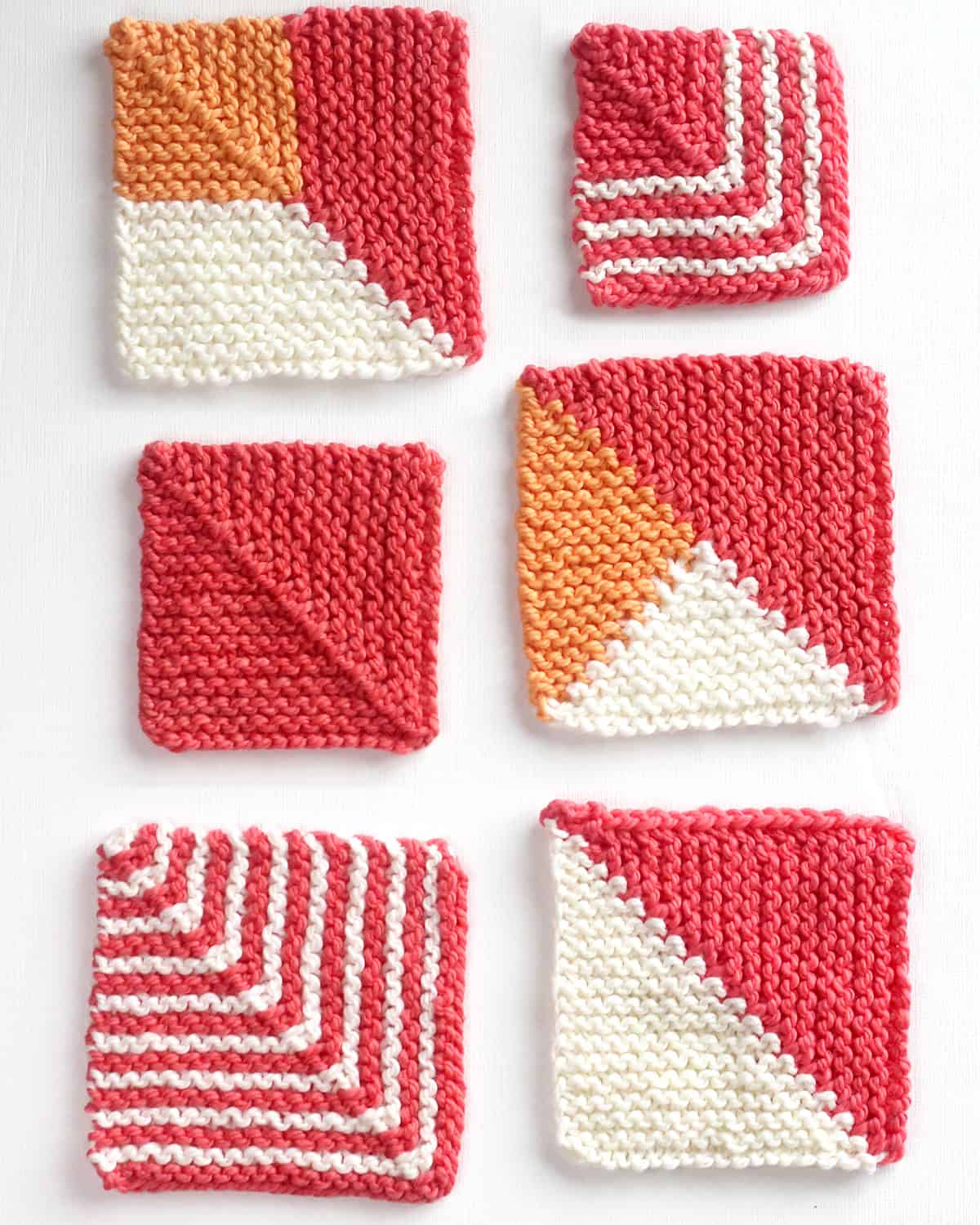
Table of Contents
Discover the shape and texture of different mitered squares, how to design your own projects, and get tips on sewing the squares together. You’ll also receive free written knitting pattern instructions for making solid squares and multi-colored blocks. I hope you’re inspired to knit stacks of adorable mitered squares, too!
Why You’ll Love Knitting Mitered Squares
It’s been a lot of fun knitting these samples, and I’m excited to share my easy tips with you.
- Small and Portable: Mitered squares are small blocks that you can knit anywhere, making them perfect for on-the-go projects.
- Yarn Stash Buster: Use leftover yarn from other projects since each square requires small amounts.
- Easy to Memorize: After knitting a few squares, you’ll remember the pattern, no longer needing to reference the instructions.
- Colorwork Designs: Change yarn colors to create unique patterns. Check out my colorful ideas below!
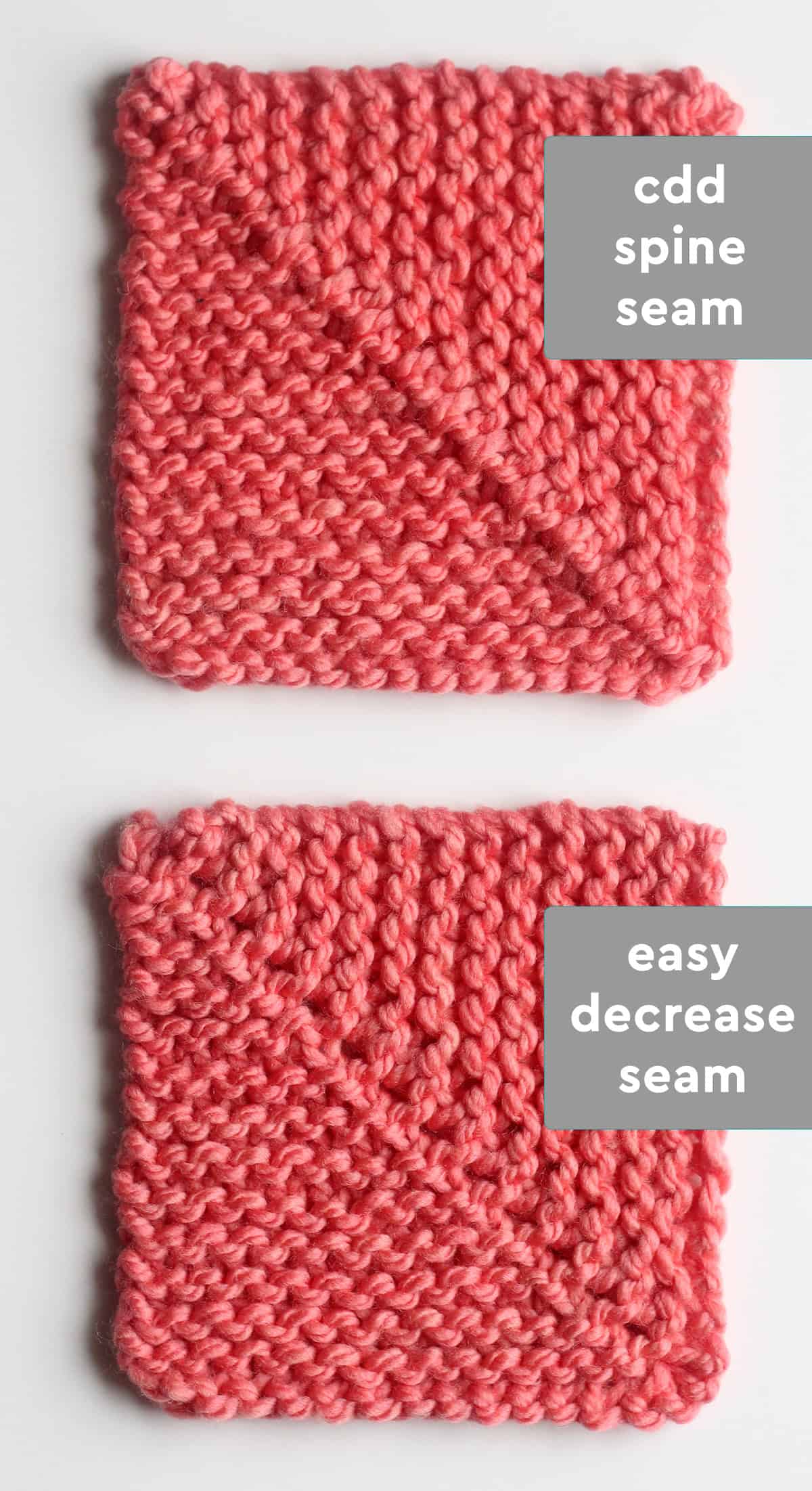
Written Knitting Patterns
There are multiple ways to decrease the center to shape your square. To keep things simple, I have separated my written patterns for a single-colored square into two different categories: CDD Spine Seam and Easy Decrease Seam, along with the versatile 2-Color Half Triangle.
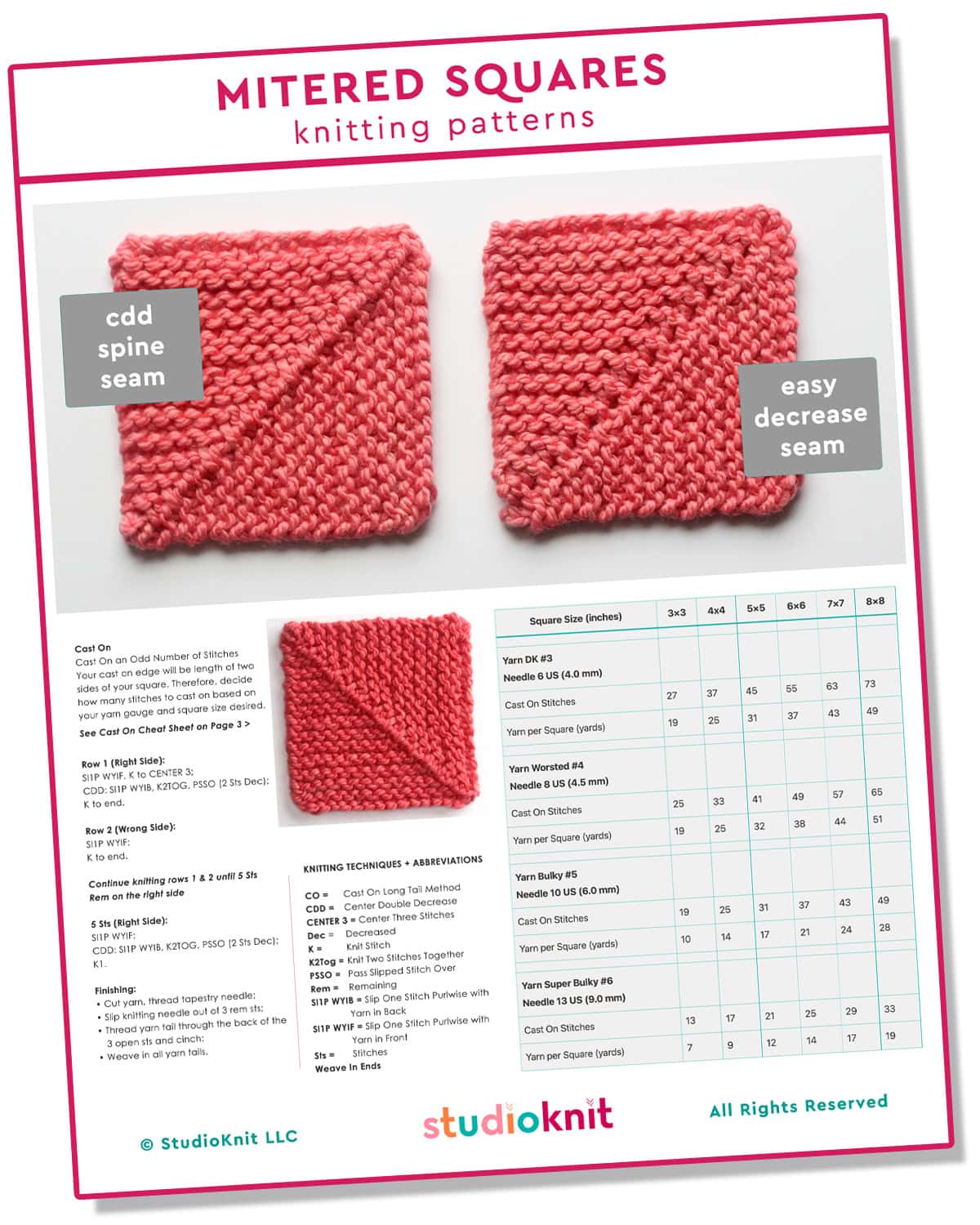
Get Your Free Cheat Sheet
Watch Video Tutorial
Colorwork Designs
Colorwork knitting uses different yarn colors to make detailed patterns in your projects. Beyond the one-color pattens above, I’ve also written printable pattern instructions for these different color combinations.
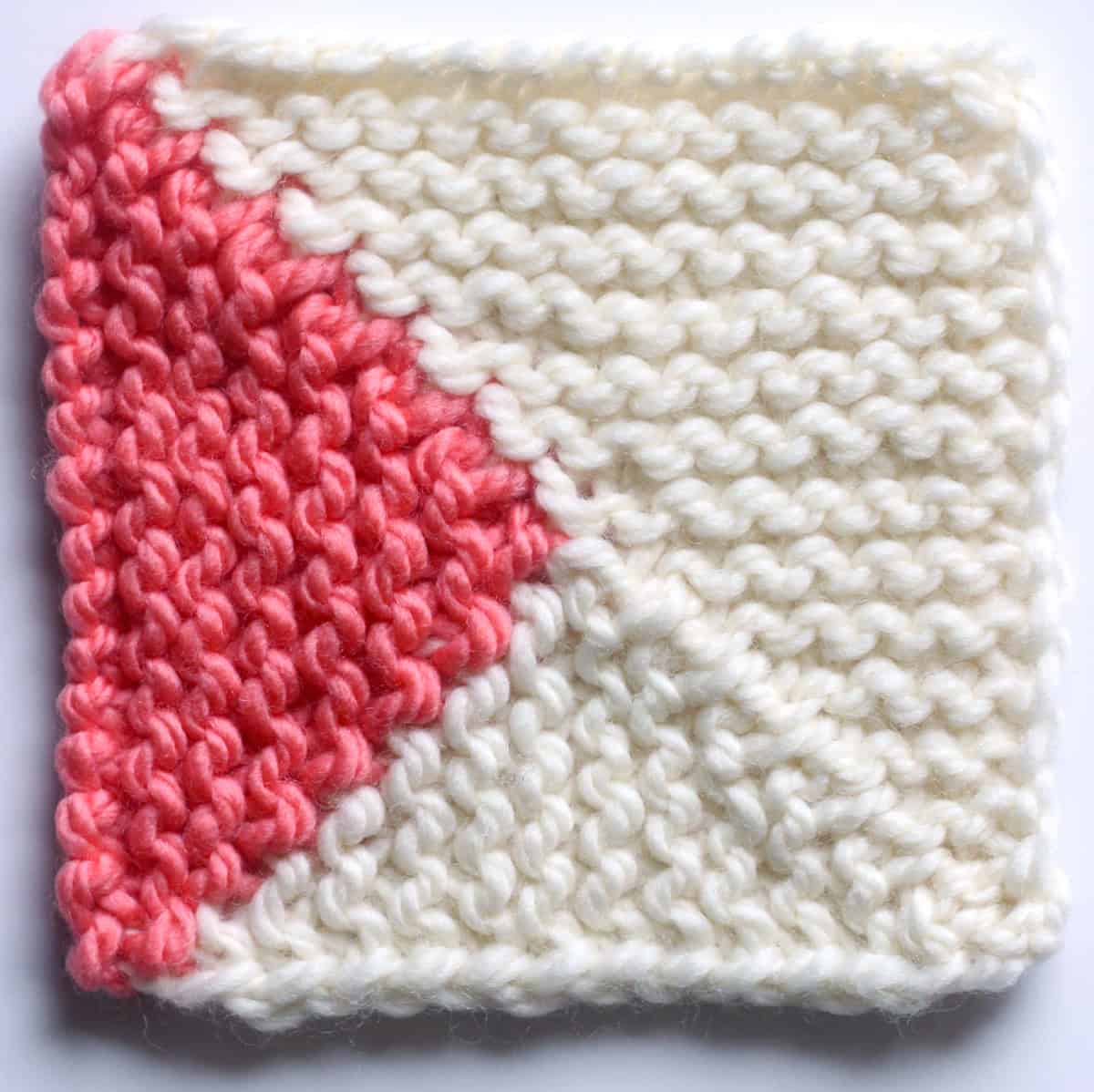
Split Quarter Square Triangle Knitting Pattern (2-Color Mitered Square) SQST
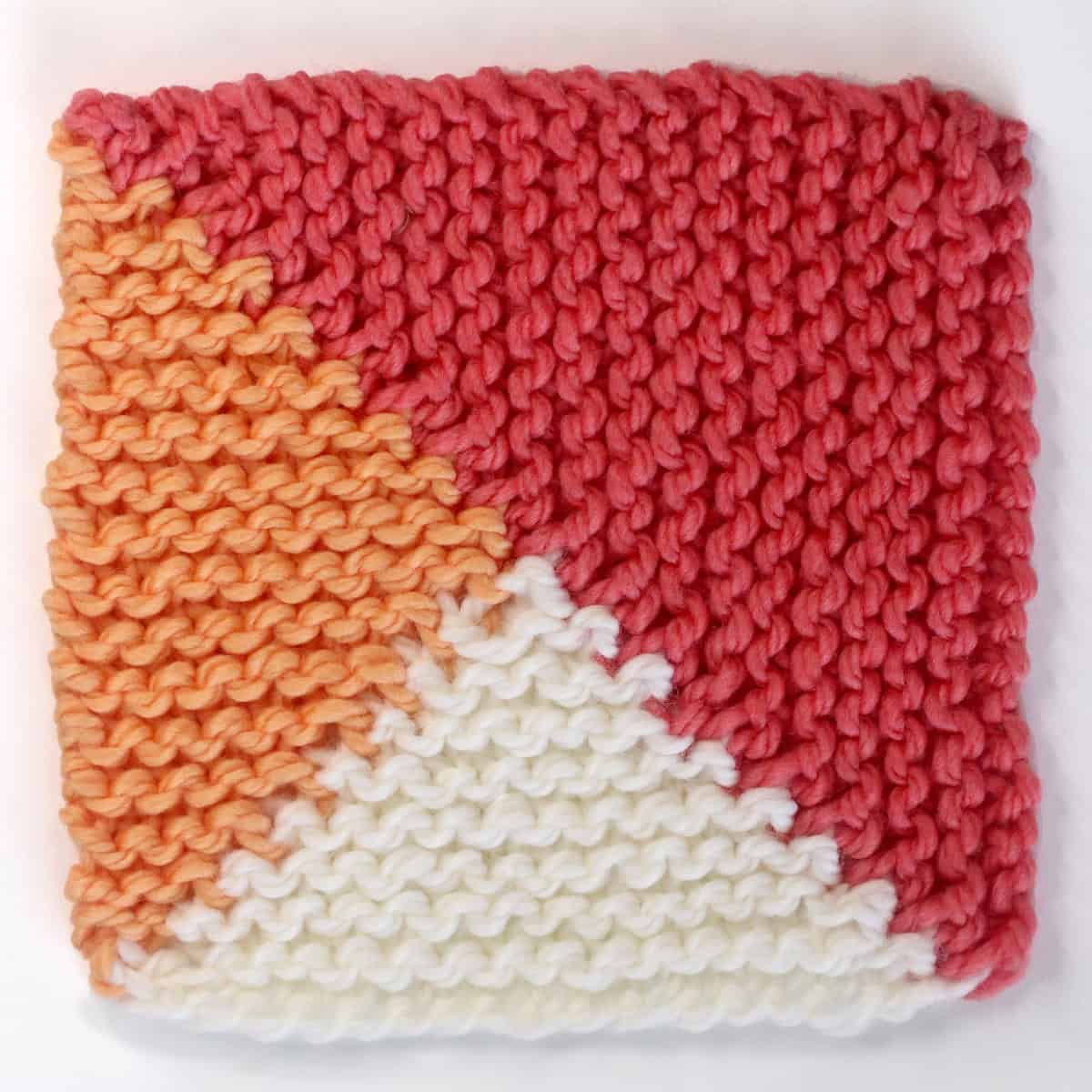
Split Quarter Square Triangle Knitting Pattern (3-Color Mitered Square) SQST
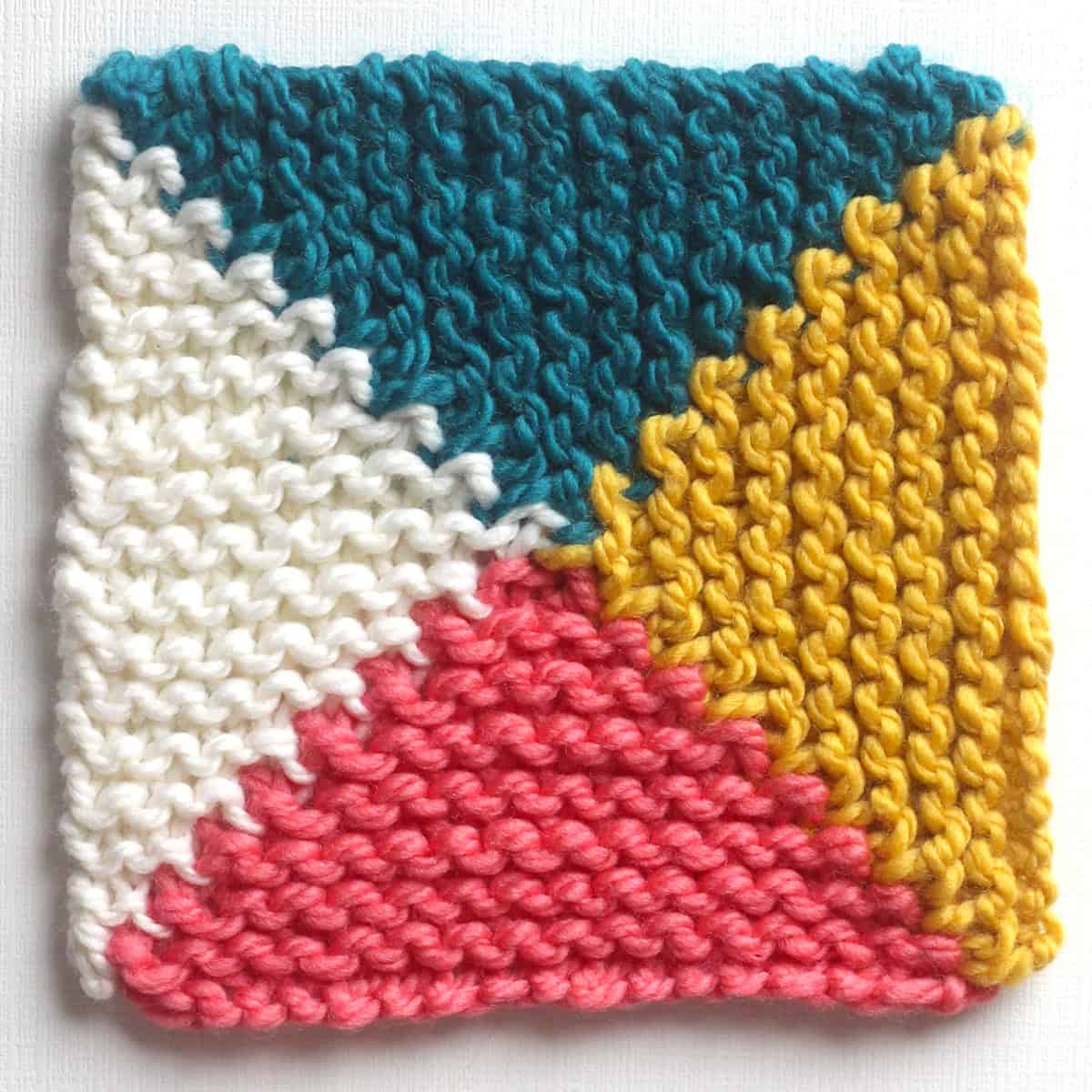
Quarter Square Triangle Knitting Pattern (4-Color Mitered Square)
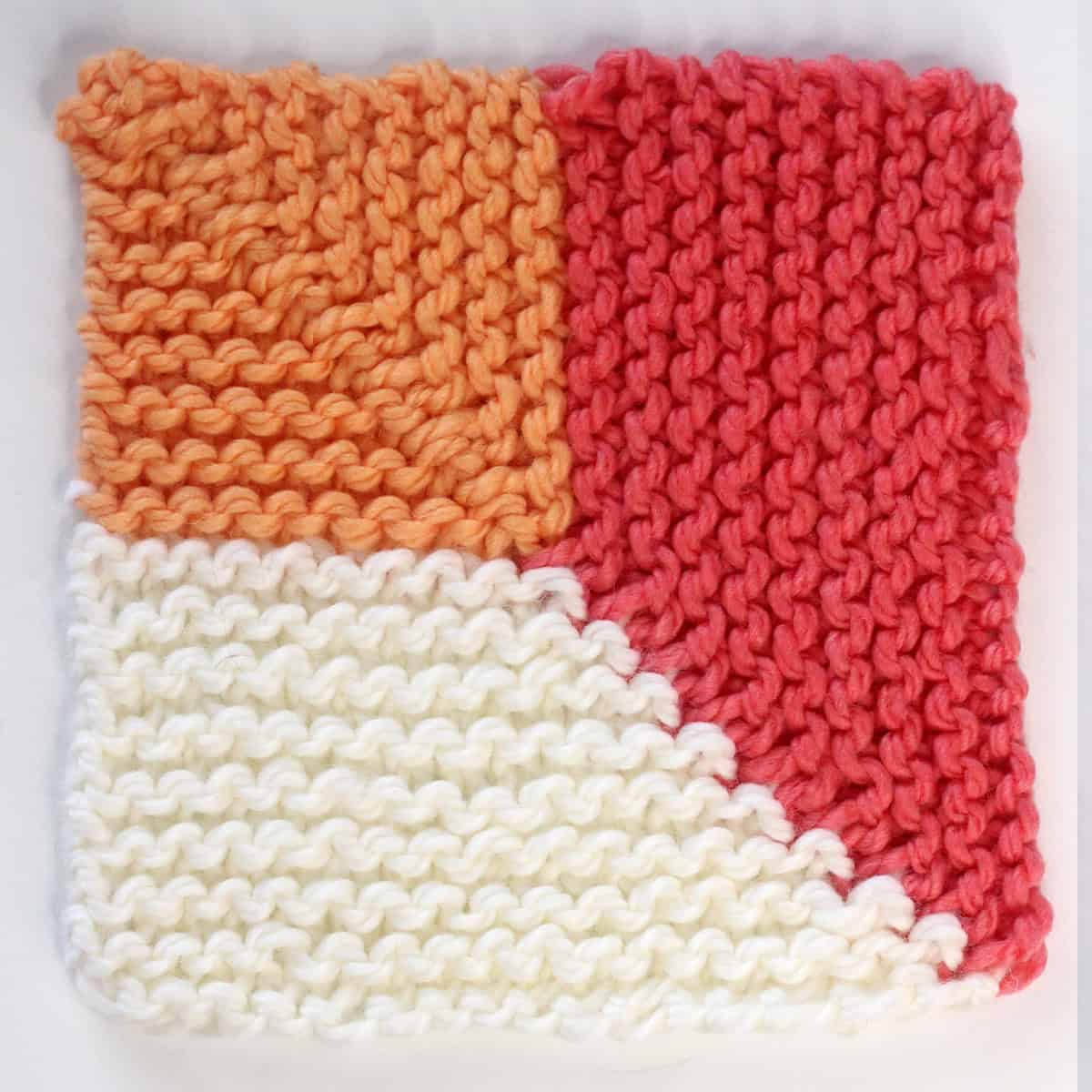
Attic Window Knitting Pattern (3-Color Mitered Square)
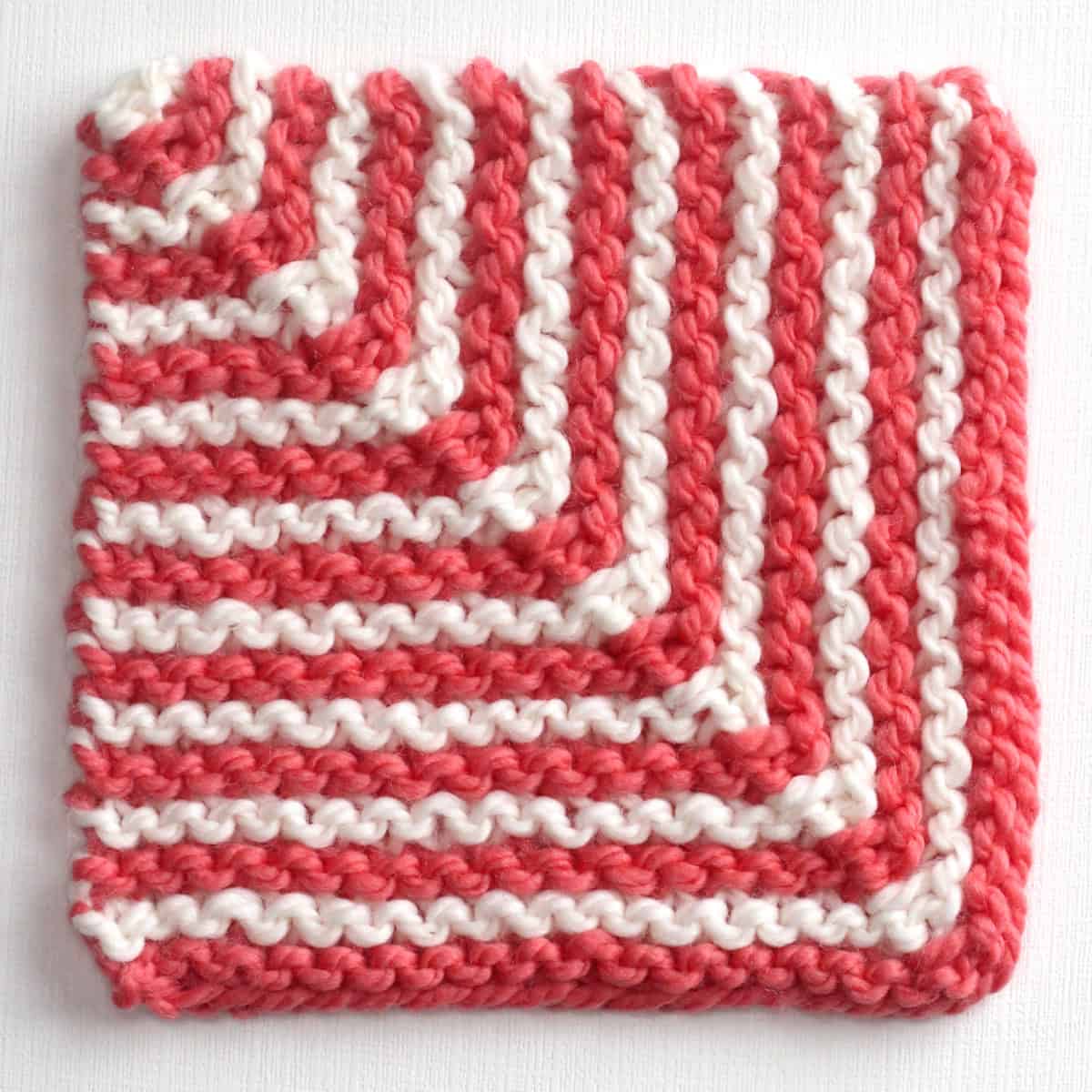
Color Striped Mitered Square Knitting Pattern
Mitered Square Construction
Design Shape
In woodworking, a miter joint is created by cutting two pieces of wood at a 45 degree angle so they fit together to form a 90-degree corner. You’ll see this technique is used in frames, boxes, and tables.
Similarly, knitted mitered squares are made by decreasing stitches to form a square with lines that meet in the middle, constructed with center decrease stitches. These decreases pull the sides of the square inwards to create the mitered effect.
Knit Stitch Texture
Mitered squares are typically knit in the beginner-friendly Garter Stitch. This texture is the most popular choice because of its structural integrity. Its ratio of one stitch to every two rows creates a perfect square when decreasing every other row, as my patterns indicate. Other knit stitch textures may also be used, but the decrease frequency needs to be adjusted according to their aspect ratios.
A basic garter stitch square will lose its shape when gravity takes hold, stretching length-wise. Pictured here, you can see that the mitered square’s opposing directions of stitches help maintain the integrity of its shape and size.
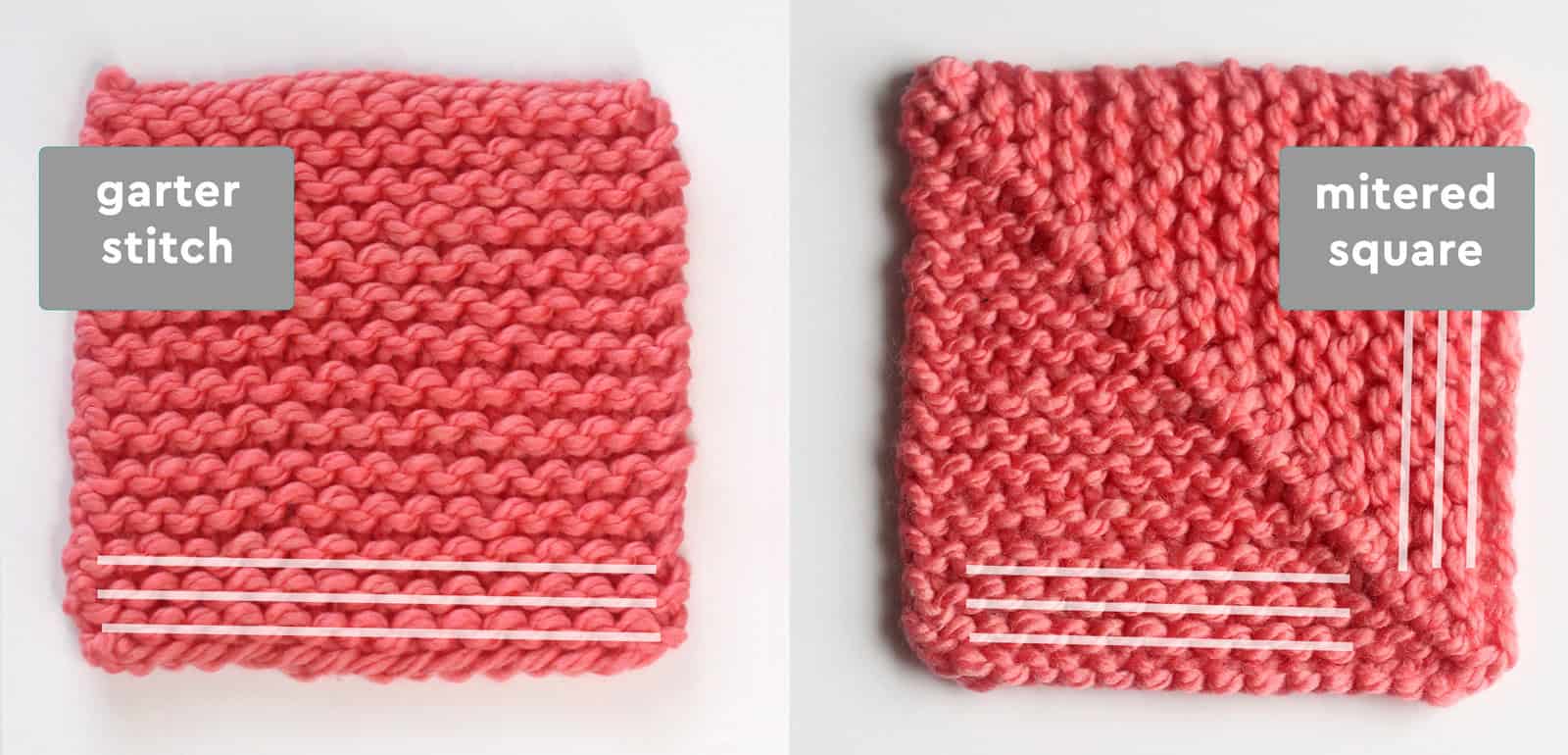
How to Pronounce Miter
Miter /ˈmītər/ – The spoken word “miter” in American English rhymes with tighter, lighter, and brighter. To hear its pronunciation, visit the Miriam Webster Dictionary and click on the audio clip or listen to my voice in my introduction video above.
Assembling Design Patterns
The modular nature of mitered squares encourages experimenting with individual block designs and layout patterns. I’ve been enjoying knitting various color combinations and creating new blanket patterns. I encourage customizing your squares with different colors and patterns to create your own unique designs, too.
As an Amazon Associate, I earn from qualifying purchases.
One design tool I have enjoyed using during the planning stage is this Half-Square Triangle Quilt Block Design Deck. Created for quilters, this user-friendly set of cards includes a variety of half-square triangles and solid squares, enabling you to create an endless number of color blocks.
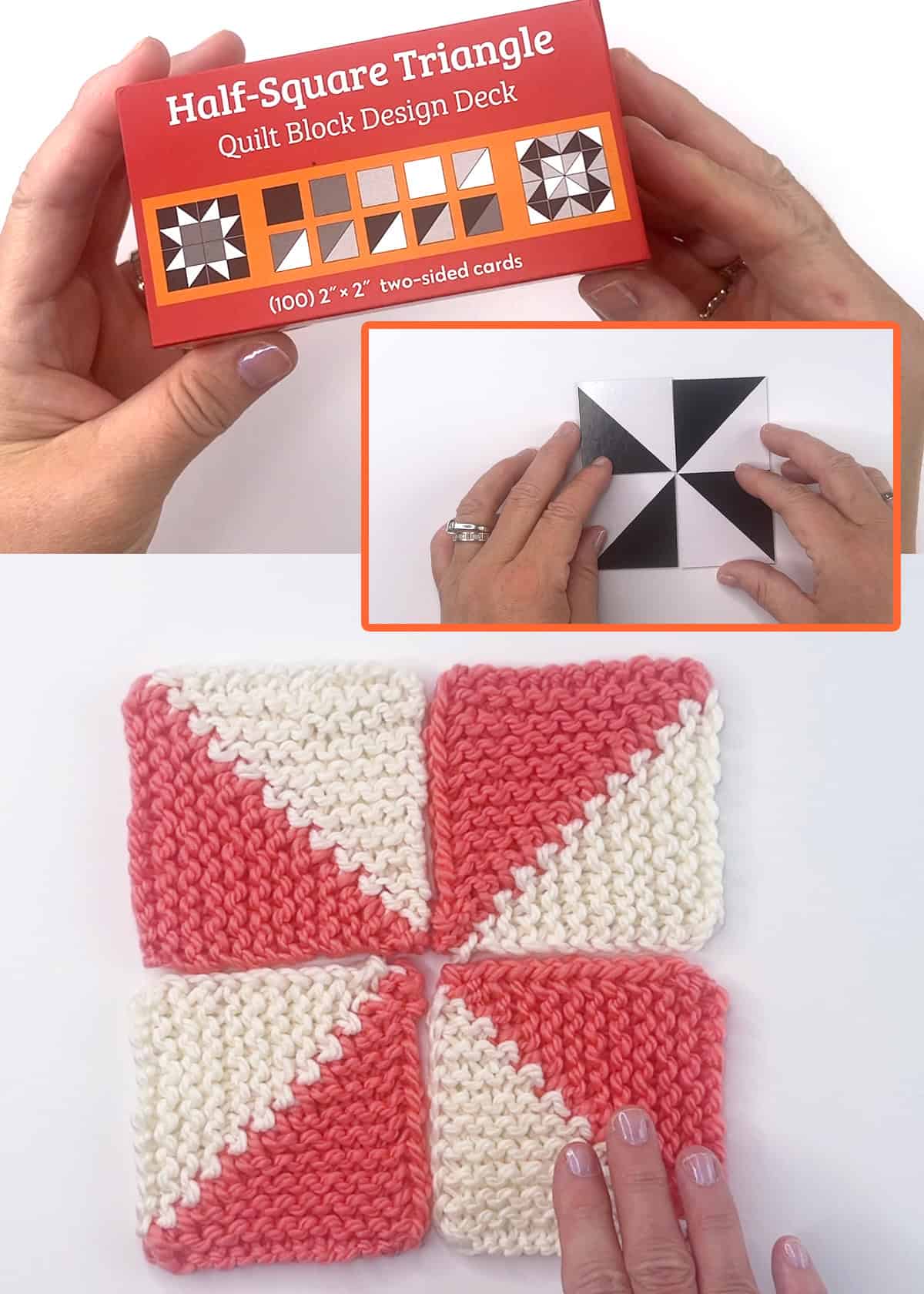
Use the cards as a fun and unique game to engage your family members with your fiber arts craft project. Scatter the cards onto your dining room table and have fun mixing and matching the squares into different designs.
Joining Mitered Squares
There are two basic ways to join your squares: Knit them individually and sew together or join squares as you go by picking up stitches.
- Sewing individual squares: Knit up each square separately using my slip stitch edge technique and sew them together after completed. My upcoming blanket designs are joined individually. This is perfect for travel knitting because your individual squares are small and easy to carry.
- Join as you go: If you’d rather continue knitting your project in one piece, pick up stitches along the edge of a finished square and start a new square. This technique works best when all squares share the same directional orientation.
• See Purl Soho’s Written Tutorial or
• Watch ‘Join as You Go‘ Video by Snufflebean Yarn >
Blocking Squares
Blocking each little square before sewing them together is highly recommended for best results. Simply wet-blocking overnight will create uniformed sized squares.
When knitting individual squares, even while retaining an even tension and using the same yarn brand and gauge, I’ve noticed that each piece is often slightly different. Not only will they be finished at the same size, but your edges will also match up when sewing together.
If you are joining your squares as you go, blocking the finished piece also encourages the rows of squares to align and have a beautiful drape.
As an Amazon Associate, I earn from qualifying purchases.
Blocking mats and T-pins: Each blocking mat measures 12×12 inches, allowing for versatile assembly shapes. The grid alignment design ensures precise measuring and handling of projects, helping you achieve a professional finish. The set includes a high-quality storage bag and 100 pins, making it convenient for carrying and storing.
Knitted Project Ideas
I’ve enjoyed searching for inspirational projects that incorporate mitered squares. Check out my favorite ideas on my Mitered Square Knitting Pattern Pinterest Board >
Blankets, Throws, and Afghans
Mitered squares are perfect for making colorful, unique blankets. You can knit each square separately, making it easy to take your knitting project anywhere. You may also knit squares as you go, joining along the way.
Sneak Peek: I’ve been playing with constructing the classic quilt design—Orion’s Star—in different yarn weights and colors. Not only does it create stunning blankets in different sizes, but I’ve also mounted them onto foam board and am currently displaying them in my Studio Knit shop windows!
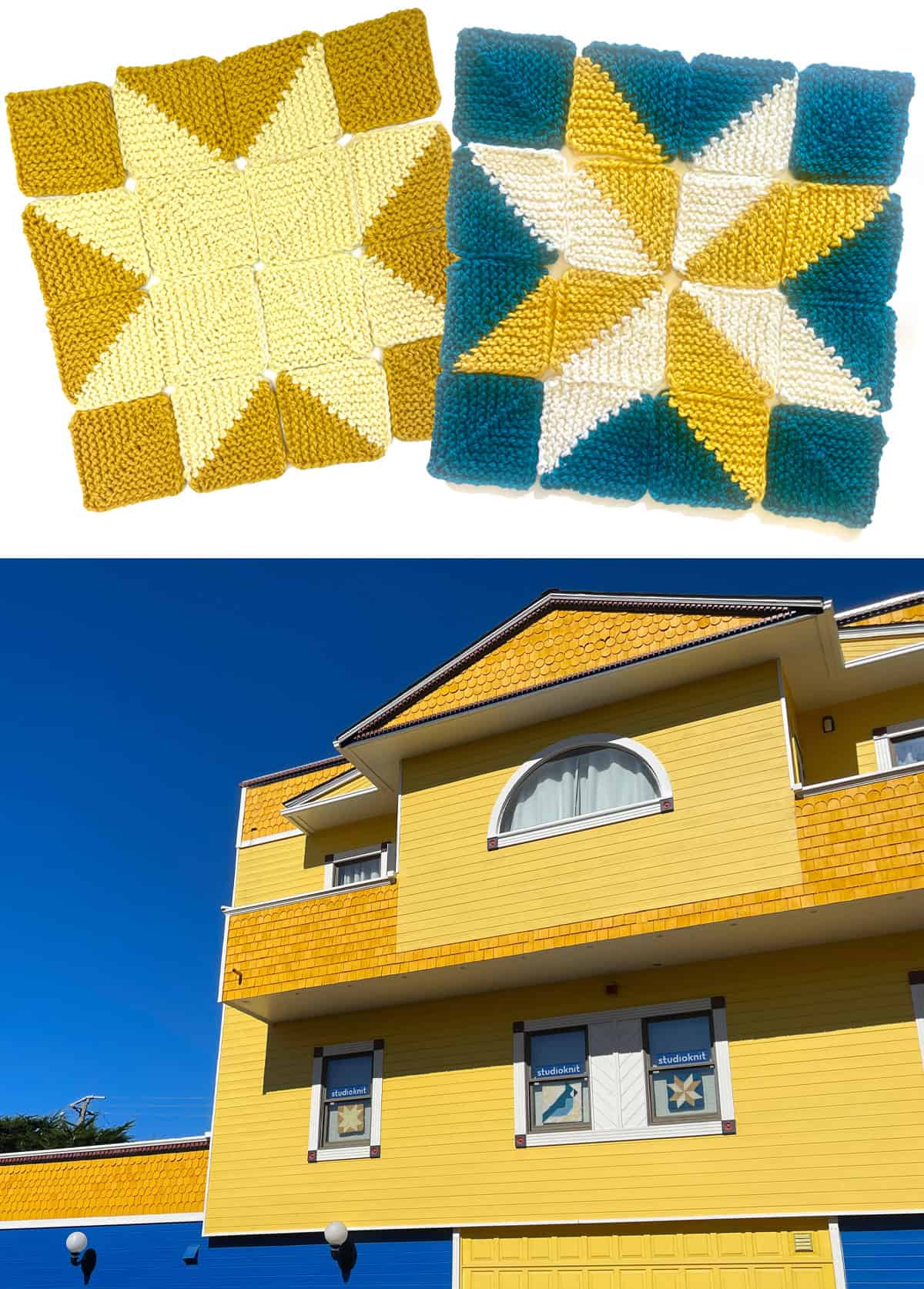
Scarves and Shawls
Mitered squares can also be used to make scarves and shawls. Knit a series of squares and join them together to create a beautiful design. Sometimes, you might use mitered squares just on the edges to add an interesting detail.
Kitchen Accessories
For smaller projects, mitered squares are perfect. You can make dishcloths, coasters, or potholders using this technique. These projects are quick and fun, and they make great gifts.
Advanced Garments
Sweaters, vests, and jackets can feature mitered squares too. You can knit mitered squares and use them as part of the design, like panels on the front or back.

Kristen McDonnell
Author • Designer • Teacher
Kristen from StudioKnit LLC produces knitting video lessons and pattern designs from her vibrant production studio on Half Moon Bay’s California coast.
Kristen McDonnell is the author of the highly acclaimed book Knit Stitch: 50 Knit + Purl Patterns featuring vintage and unique designs.

